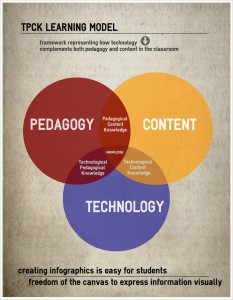Decision-Making in the Classroom

Decisions on Information Super Highway
Decision-Making occurs everyday in everything we do and say. For every action there is a reaction. We need to be ready to make decisions appropriately and efficiently. Just like an “IF-THEN” statement, the need to be ready to make logical decisions that will impact our lives and those around us. Factors to consider in transforming schools into 21st century learning environments are being influenced by socioeconomic factors.
Students need to be informed to the concept of decision-making and ready to access the information/resources available. In other words, students need to understand how to make appropriate decisions. Decision-making is a process I want students to explore and develop their own troubleshooting skills when faced with problems. I want an authentic learning environment for students to be confident when needed to make real world decisions. In order for the learning environment to be authentic, the standard of the educational technology needs to be of high quality.
 The ACOT (Apple Classroom of Tomorrow) model is a good resource when needing to make decisions on the subject technology integration. ACOT provided a concise and easy to understand analysis of the traits of a teacher who is or is not confident with their use of technology, as described in a discussion post on the models of technology integration. With the ACOT model of technology integration, I can reflect upon and make informed decisions as to what stage ogtechnology integration I am in or approaching. Just as the image above represents the information superhighway of the Internet, decisions need to be considered on how students will construct their knowledge. Will the affordances of technology integration allow students to make informed decisions with the content?
The ACOT (Apple Classroom of Tomorrow) model is a good resource when needing to make decisions on the subject technology integration. ACOT provided a concise and easy to understand analysis of the traits of a teacher who is or is not confident with their use of technology, as described in a discussion post on the models of technology integration. With the ACOT model of technology integration, I can reflect upon and make informed decisions as to what stage ogtechnology integration I am in or approaching. Just as the image above represents the information superhighway of the Internet, decisions need to be considered on how students will construct their knowledge. Will the affordances of technology integration allow students to make informed decisions with the content?
Real Technology Proposals
The ability to make an informed decision is crucial when researching and planning for technology procurement. In a discussion post about the intrinsic value of classroom computers, I analyzed the simple fact that having technology in the classroom does not make a teacher more effective. Teachers, administrators, and the community should all contribute and participate with policy-makers in the decision-making process of purchasing and integrating technology resources into the classroom.
Creating a Grant Proposal Brief to purchase technology resources was a benefit for me as I am now participating in a district strategy to evaluate Garland ISD’s vision for technology usage and needs. GISD has teamed up with Engage! Learning, Inc. to identify needs and goals for the district. There are seven teams, each with a separate objective and the Digital Tools team (one of the seven) was a natural fit for me. Throughout each meeting there was collaboration with community members and other district employees to explore opportunities for district wide technology expansion and acquisition of necessary technology resources. This has been an exciting opportunity to apply what I have acquired in my studies and actively participate in the new vision for Garland ISD.
I have applied what I learned from my Administration of Media Technology course to support my ability to identity tools to benefit learning and promote a forward thinking with technology. The Grant Proposal Brief allowed me to visualize the needs of the end users (students) as the underlying reason to seek funding for necessary technology resources. I discovered the necessity to provide meaningful background and purpose while preparing the initial proposal statement for my proposal brief. From the Grant Proposal Brief, I utilized the “formula” for the purpose statement (accomplish X by Y because of Z) to foster an understanding of developing action items from action statements in the Digital Tools meetings.
The landscape of technology in education is evolving rapidly and at times it is difficult to stay current with new trends and resources to assist students’ in their acquisition of knowledge. Two key concepts that have benefited me with technology change are equitable distribution and over sold and under used technology. As I work with the Digital Tools team, we are applying these two concepts of how to equally distribute technology across the district and to ensure the technology is appropriate and helps students’ construct knowledge. I am learning it is important to stay knowledge and current with legislation for technology integration in classroom. In the discussion post over national standards for technology integration, I look into the need for on-going professional development to supplement the TEA’s long range plan for technology along with national standards.
Examples of research and decision making can be seen in my Technology Multimedia Grant Proposal. This multimedia presentation of my proposal brief showcases my ability to use multimedia resources to create a visually stimulating pitch for technology demands. Research for the proposal is connected with technology needs and grant writing.
Decision-Making Artifacts:
- Are Computers Worth the Investment
- Factors to Consider for Technology Implementation
- Grant Proposal Brief
- Models of Technology Integration
- Quality of Eucational Technology
- Technology Integration and National Standards
- Technology Multimedia Grant Proposal
- TPCK Infographic Image Design
References:
- sam2172. (Artist). New skills concept [Web Graphic]. Retrieved from http://www.bigstockphoto.com/image-34084469
